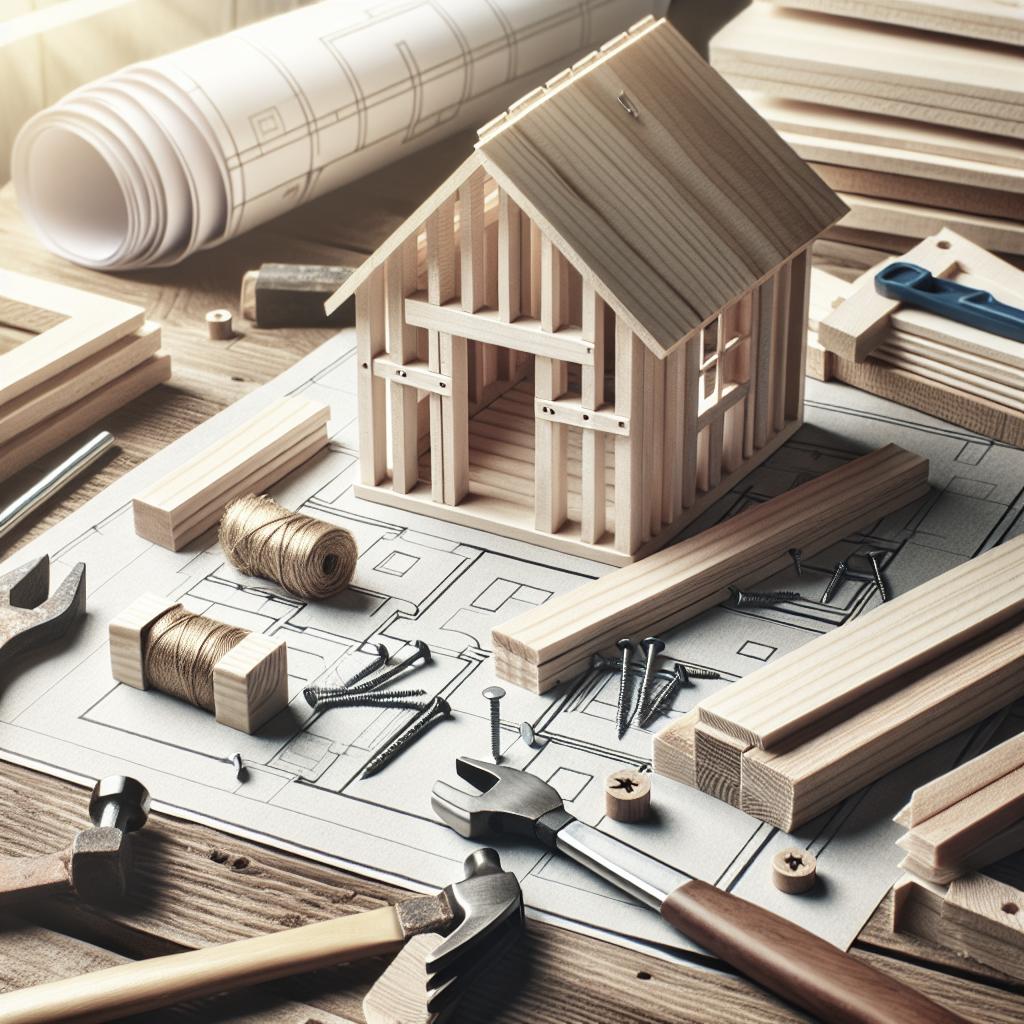“`html
How to Make a House: From Foundation to Finish
Building a house is a monumental undertaking that involves meticulous planning, coordination, and execution. Whether you are planning to build your dream home or are simply curious about the process, understanding the various stages can provide invaluable insights. This blog post explores the fundamental phases of building a house, from preparing the site and laying the foundation to completing interior finishes and exterior details. You’ll gain practical tips on cost-saving measures and learn the importance of inspections and walk-throughs. By the end, you’ll have a deeper appreciation for the intricate and rewarding journey of house construction.
Prepare the Work Site
The first step in building a house is preparing the work site, an essential phase that sets the stage for construction. This involves securing the necessary permits and performing site surveys to understand the land’s topography and soil conditions. Clearing the land of any debris, rocks, or vegetation is crucial to ensure a clear and workable area.
Setting up temporary structures such as portable toilets, storage for materials, and establishing utility connections is also important. Proper site preparation helps avoid potential issues later on and ensures a smooth start to the building process. It’s also a time to establish safety protocols to protect workers and the environment.
Lay the Foundation
Laying the foundation is a critical step that requires precision and expertise. The type of foundation depends on the soil and climate of the location, with options including slab, crawl space, or basement foundations. Excavation for footings and accurately setting forms are crucial tasks.
Once forms are in place, pouring concrete calms the soul with its permanence, allowing the structure to gain strength over time. Curing the concrete is necessary to ensure durability and stability, preventing future settling or cracking.
Tip
Consider hiring a professional structural engineer during the foundation phase to ensure your home is built on solid ground. This expert can provide guidance on dealing with unique challenges such as high water tables or problematic soil types.
Frame the House
Framing the house transforms abstract plans into a visible structure. This phase includes erecting the walls, floors, and roof structure. Precision is vital, as framing defines the home’s shape and provides support for everything that follows.
Using quality materials like lumber or steel ensure longevity and resilience against weather disruptions. This stage often proceeds swiftly, and soon you’ll witness the outlines of each room and space taking shape as the architectural vision unfolds.
Install the HVAC
HVAC (Heating, Ventilation, and Air Conditioning) installation is critical for creating a comfortable living environment. This involves installing ductwork, necessary joints, and carefully selecting heating and cooling systems appropriate for the home’s size and location.
Energy efficiency and smart technology integration can enhance performance and reduce long-term costs. A well-installed HVAC system ensures proper air circulation and optimal climate control year-round, adding significant value to the house.
Install Plumbing and Electrical
At this stage, the invisible networks that make modern living possible are installed: plumbing and electrical systems. They weave through the framework, providing essential services like water, waste removal, and power distribution.
Choosing high-quality piping and wiring, coupled with expert installation, is crucial to avoid future problems such as leaks and electrical failures. This phase requires meticulous planning and coordination to accommodate fixtures and appliances and ensure safety compliance.
Add the Insulation
Insulation plays a significant role in regulating temperatures and increasing energy efficiency. Various materials such as fiberglass, foam, and cellulose offer different benefits depending on the environment.
Proper insulation not only conserves energy but also acts as a sound barrier, creating a peaceful interior atmosphere. It’s essential to ensure every nook and cranny is sealed to maximize the house’s energy efficiency.
Install Drywall and Paint Surfaces
With utilities and insulation in place, the next step is to install drywall, creating finished walls and ceilings. This process involves cutting, hanging, and securing drywall sheets, followed by sealing seams and smoothing the surface with joint compound.
Painting surfaces is where creativity comes alive. Choosing color palettes that reflect personal tastes transforms the interior spaces into unique realms of expression and style, making the house truly feel like home.
Finish the Interior
Finishing the interior involves installing fixtures, cabinetry, and flooring. Selecting materials and designs that align with your aesthetic preferences contributes to a cohesive living environment.
The finer details, such as trim, baseboards, and hardware, complete the touch, adding elegance and functionality. This stage also includes fitting bathrooms and kitchens with essential appliances and conveniences.
Complete the House Exterior
As the interior reaches completion, attention shifts to the exterior finishes. This includes installing siding, roofing, windows, and doors, ensuring the house is both visually appealing and well-protected.
Landscaping enhances curb appeal and provides a welcoming ambiance. Plants, paths, lighting, and outdoor structures contribute to a harmonious balance between the home and its surroundings.
Complete Cleaning, Inspections, and Walk-Throughs
The final phase includes thorough cleaning, removing any construction debris, and preparing the house for occupancy. This is followed by inspections to ensure everything conforms to safety and quality standards.
Conducting a walk-through allows builders and homeowners to address any concerns or final adjustments. This step ensures that each detail aligns with the initial vision and specifications.
How to Save Money Building a House
Building a house can be costly, but strategic planning can reduce expenses significantly. Consider alternative materials that offer durability without the premium price. Pre-fabricated components can also minimize labor costs.
Additionally, obtaining multiple bids from contractors and negotiating prices can lead to savings. Prioritize energy-efficient installations that will lower utility bills and increase the home’s value over time.
Lessons Learned
| Phase | Description |
|---|---|
| Prepare the Work Site | Preparation, permits, and setting up temporary structures. |
| Lay the Foundation | Excavation, formwork, and concrete pouring. |
| Frame the House | Erecting walls, floors, and roofs. |
| Install the HVAC | Establishing the climate control systems. |
| Install Plumbing and Electrical | Adding piping and wiring for essential services. |
| Add the Insulation | Sealing the house for temperature control and sound proofing. |
| Install Drywall and Paint Surfaces | Finishing walls, ceilings, and adding visual flair through painting. |
| Finish the Interior | Installing fixtures, cabinetry, and flooring. |
| Complete the House Exterior | Adding siding, roofing, and landscaping. |
| Complete Cleaning, Inspections, and Walk-Throughs | Final cleanup and inspection for quality assurance. |
| How to Save Money Building a House | Cost-effective strategies and maximizing efficiency. |
“`


